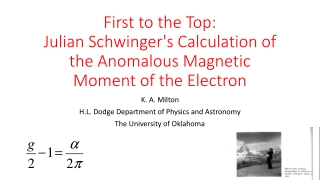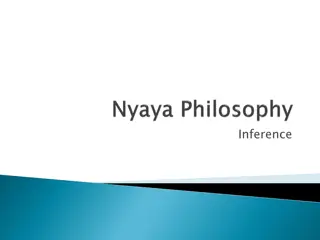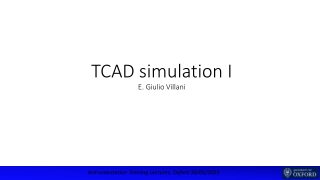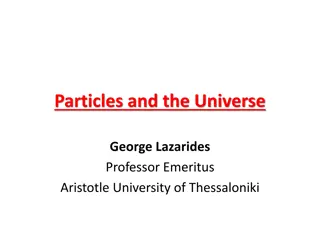Understanding Electromagnetic Waves: Maxwell's Contributions and Hertz's Observations
James Clerk Maxwell's groundbreaking work in the 19th century revealed the fundamental nature of light as an electromagnetic wave. His equations formed the basis for understanding the interplay between electricity and magnetism, predicting the existence of electromagnetic waves. Heinrich Hertz further validated Maxwell's theories through experiments that confirmed the speed of electromagnetic waves. This informative content explores Maxwell's contributions and Hertz's observations in the study of electromagnetic waves.
Download Presentation
Please find below an Image/Link to download the presentation.
The content on the website is provided AS IS for your information and personal use only. It may not be sold, licensed, or shared on other websites without obtaining consent from the author. Download presentation by click this link. If you encounter any issues during the download, it is possible that the publisher has removed the file from their server.
Presentation Transcript
ELECTROMAGNETIC WAVES
James Clerk Maxwell and electromagnetic waves The Scottish physicist James Clerk Maxwell (1831 1879) was the first person to truly understand the fundamental nature of light. He proved in 1865 that an electromagnetic disturbance should propagate in free space with a speed equal to that of light. From this, he deduced correctly that light was an electromagnetic wave. James Clerk Maxwell, a 19th-century physicist, developed a theory that explained the relationship between electricity and magnetism and correctly predicted that visible light is caused by electromagnetic waves.
Maxwells equations Electric field lines originate on positive charges and terminate on negative charges. The electric field is defined as the force per unit charge on a test charge, and the strength of the force is related to the electric constant 0, also known as the permittivity of free space. From Maxwell s first equation we obtain a special form of Coulomb s law known as Gauss s law for electricity. Magnetic field lines are continuous, having no beginning or end. No magnetic monopoles are known to exist. The strength of the magnetic force is related to the magnetic constant 0, also known as the permeability of free space. This second of Maxwell s equations is known as Gauss s law for magnetism. A changing magnetic field induces an electromotive force (emf) and, hence, an electric field. The direction of the emf opposes the change. This third of Maxwell s equations is Faraday s law of induction, and includes Lenz s law. Magnetic fields are generated by moving charges or by changing electric fields. This fourth of Maxwell s equations encompasses Ampere s law and adds another source of magnetism changing electric fields.
Electricity, magnetism, and light Since changing electric fields create relatively weak magnetic fields, they could not be easily detected at the time of Maxwell s hypothesis. Maxwell realized, however, that oscillating charges, like those in AC circuits, produce changing electric fields. He predicted that these changing fields would propagate from the source like waves. The waves predicted by Maxwell would consist of oscillating electric and magnetic fields defined to be an electromagnetic wave (EM wave). Electromagnetic waves would be capable of exerting forces on charges great distances from their source, and they might thus be detectable. Maxwell calculated that electromagnetic waves would propagate at a speed given by the equation
Hertzs observations The German physicist Heinrich Hertz (1857 1894) was the first to generate and detect certain types of electromagnetic waves in the laboratory. Starting in 1887, he performed a series of experiments that not only confirmed the existence of electromagnetic waves, but also verified that they travel at the speed of light. Hertz used an RLC circuit that resonates at a known frequency and connected it to a loop of wire as shown below. High voltages induced across the gap in the loop produced sparks that were visible evidence of the current in the circuit and that helped generate electromagnetic waves. Across the laboratory, Hertz had another loop attached to another RLC circuit, which could be tuned (as the dial on a radio) to the same resonant frequency as the first and could, thus, be made to receive electromagnetic waves. This loop also had a gap across which sparks were generated, giving solid evidence that electromagnetic received. waves had been
Production of EM waves Whenever a current varies, associated electric and magnetic fields vary, moving out from the source like waves. Figure on the left shows varying current in a long straight wire, produced by an AC generator at its center. The electric field shown surrounding the wire is produced by the charge distribution on the wire. Both the E and the charge distribution vary as the current changes. The changing field propagates outward at the speed of light. This long straight gray wire with an AC generator at its center becomes a broadcast antenna for electromagnetic waves. Shown here are the charge distributions at four different times. The electric field propagates away from the antenna at the speed of light, forming part of an electromagnetic wave. There is an associated magnetic field which propagates outward as well. The electric and magnetic fields are closely related and propagate as an electromagnetic wave.
Electric and magnetic fields moving together (a) The current in the antenna produces the circular magnetic field lines. The current (I) produces the separation of charge along the wire, which in turn creates the electric field as shown. (b) The electric and magnetic fields ( E and B) near the wire are perpendicular; they are shown here for one point in space. (c) The magnetic field varies with current and propagates away from the antenna at the speed of light.
Production of EM waves, details The electric and magnetic fields produced by a long straight wire antenna are exactly in phase. Note that they are perpendicular to one another and to the direction of propagation, making this a transverse wave. Electromagnetic waves generally propagate out from a source in all directions, sometimes forming a complex radiation pattern. A part of the electromagnetic wave sent out from the antenna at one instant in time. The electric and magnetic fields (E and B) are in phase, and they are perpendicular to one another and the direction of propagation. For clarity, the waves are shown only along one direction, but they propagate out in other directions too. https://physics.bu.edu/~duffy/HTML5/three D_EMwave.html
Receiving EM wave Electromagnetic waves carry energy away from their source, similar to a sound wave carrying energy away from a standing wave on a guitar string. An antenna for receiving EM signals works in reverse. And like antennas that produce EM waves, receiver antennas are specially designed to resonate at particular frequencies. An incoming electromagnetic wave accelerates electrons in the antenna, setting up a standing wave. If the radio or TV is switched on, electrical components pick up and amplify the signal formed by the accelerating electrons. The signal is then converted to audio and/or video format. Sometimes big receiver dishes are used to focus the signal onto an antenna.
Relationship between the electric and magnetic field strengths There is a relationship between the electric and magnetic field strengths in an electromagnetic wave. This can be understood by again considering the antenna just described. The stronger the E -field created by a separation of charge, the greater the current and, hence, the greater the B-field created. Since current is directly proportional to voltage (Ohm s law) and voltage is directly proportional to E-field strength, the two should be directly proportional. It can be shown that the magnitudes of the fields do have a constant ratio, equal to the speed of light.
Example What is the maximum strength of the magnetic field in an electromagnetic wave that has a maximum electric field strength of 1000 V/m?
The Electromagnetic Spectrum The frequencies and wavelengths of electromagnetic waves found in nature extend over such a wide range that we have to use a logarithmic scale to show all important bands. The boundaries between bands are somewhat arbitrary.
Electromagnetic spectrum, more details Type of EM wave Production Accelerating chargesCommunications Applications Life sciences aspect Issues Requires controls for band use Radio & TV MRI Remote controls Accelerating charges & thermal agitation Communications Ovens Radar Microwaves Deep heating Cell phone use Thermal agitations & electronic transitions Thermal imaging Heating Absorbed by atmosphere Infrared Greenhouse effect Thermal agitations & electronic transitionsAll pervasive Photosynthesis Human vision Visible light Thermal agitations & electronic transitions Sterilization Cancer control Vitamin D production Ozone depletion Cancer causing Ultraviolet Inner electronic transitions and fast collisions Medical diagnosis Cancer therapy X-rays Medical Security Cancer causing Nuclear medicineSecurity Medical diagnosis Cancer therapy Cancer causing Radiation damage Gamma rays Nuclear decay
Electromagnetic spectrum: rules of thumb Three rules that apply to electromagnetic waves in general are as follows: High-frequency electromagnetic waves are more energetic and are more able to penetrate than low-frequency waves. High-frequency electromagnetic waves can carry more information per unit time than low-frequency waves. The shorter the wavelength of any electromagnetic wave probing a material, the smaller the detail it is possible to resolve. Note that there are exceptions to these rules of thumb.
Radio waves The broad category of radio waves is defined to contain any electromagnetic wave produced by currents in wires and circuits. Its name derives from their most common use as a carrier of audio information (i.e., radio). The name is applied to electromagnetic waves of similar frequencies regardless of source. Radio waves from outer space, for example, are created by many astronomical phenomena, and their study has revealed much about nature on the largest scales. There are many uses for radio waves, and so the category is divided into many subcategories, including microwaves and those electromagnetic waves used for AM and FM radio, cellular telephones, and TV. The lowest commonly encountered radio frequencies are produced by high-voltage AC power transmission lines at frequencies of 50 or 60 Hz. These extremely long wavelength electromagnetic waves (about 6000 km!) are one means of energy loss in long-distance power transmission.
Microwaves Microwaves are the highest-frequency electromagnetic waves that can be produced by currents in macroscopic circuits and devices. Microwave frequencies range from about 109 Hz to the highest practical LC resonance at nearly 1012 Hz. Since they have high frequencies, their wavelengths are short compared with those of other radio waves hence the name microwave. Microwaves can also be produced by atoms and molecules. They are, for example, a component of electromagnetic radiation generated by thermal agitation. The thermal motion of atoms and molecules in any object at a temperature above absolute zero causes them to emit and absorb radiation. Since it is possible to carry more information per unit time on high frequencies, microwaves are quite suitable for communications. Most satellite-transmitted information is carried on microwaves, as are land-based long-distance transmissions. A clear line of sight between transmitter and receiver is needed because of the short wavelengths involved.
Infrared radiation Infrared radiation is generally produced by thermal motion and the vibration and rotation of atoms and molecules. Electronic transitions in atoms and molecules can also produce infrared radiation. The range of infrared frequencies extends up to the lower limit of visible light, just below red. Frequencies at its upper limit are too high to be produced by accelerating electrons in circuits, but small systems, such as atoms and molecules, can vibrate fast enough to produce these waves. Water molecules rotate and vibrate particularly well at infrared frequencies, emitting and absorbing them so efficiently that the emissivity for skin is e=0.97in the infrared. The Sun radiates like a nearly perfect blackbody with a 6000 K surface temperature. About half of the solar energy arriving at the Earth is in the infrared region, with most of the rest in the visible part of the spectrum, and a relatively small amount in the ultraviolet.
Visible light Visible light is the narrow segment of the electromagnetic spectrum to which the normal human eye responds. Visible light is produced by vibrations and rotations of atoms and molecules, as well as by electronic transitions within atoms and molecules. The receivers or detectors of light largely utilize electronic transitions. We say the atoms and molecules are excited when they absorb and relax when they emit through electronic transitions. 380 450 nm Violet 450 495 nm Blue 495 570 nm Green 570 590 nm Yellow 590 620 nm Orange 620 750 nm Red
Ultraviolet radiation Ultraviolet means above violet. The electromagnetic frequencies of ultraviolet radiation (UV) extend upward from violet, the highest-frequency visible light. Ultraviolet is also produced by atomic and molecular motions and electronic transitions. The wavelengths of ultraviolet extend from 400 nm down to about 10 nm at its highest frequencies, which overlap with the lowest X-ray frequencies. It was recognized as early as 1801 by Johann Ritter that the solar spectrum had an invisible component beyond the violet range. Many insects and birds can see ultraviolet wavelengths that humans cannot. The left- hand photo shows how black-eyed Susans look to us. The right-hand photo (in false color), taken with an ultraviolet-sensitive camera, shows how these same flowers appear to the bees that pollinate them. Note the prominent central spot that is invisible to humans.
X-Rays In the 1850s, scientists (such as Faraday) began experimenting with high-voltage electrical discharges in tubes filled with rarefied gases. It was later found that these discharges created an invisible, penetrating form of very high frequency electromagnetic radiation. This radiation was called an X-ray, because its identity and nature were unknown. There are two methods by which X-rays are created both are submicroscopic processes and can be caused by high-voltage discharges. While the low-frequency end of the X-ray range overlaps with the ultraviolet, X-rays extend to much higher frequencies (and energies). X-rays have adverse effects on living cells similar to those of ultraviolet radiation, and they have the additional liability of being more penetrating, affecting more than the surface layers of cells. Cancer and genetic defects can be induced by exposure to X-rays. Because of their effect on rapidly dividing cells, X-rays can also be used to treat and even cure cancer. The widest use of X-rays is for imaging objects that are opaque to visible light, such as the human body or aircraft parts. In humans, the risk of cell damage is weighed carefully against the benefit of the diagnostic information obtained. However, questions have risen in recent years as to accidental overexposure of some people during CT scans a mistake at least in part due to poor monitoring of radiation dose.
Gamma Rays Soon after nuclear radioactivity was first detected in 1896, it was found that at least three distinct types of radiation were being emitted. The most penetrating nuclear radiation was called a gamma ray ( g-ray) (again a name given because its identity and character were unknown), and it was later found to be an extremely high frequency electromagnetic wave. In fact, g-rays are any electromagnetic radiation emitted by a nucleus. This can be from natural nuclear decay or induced nuclear processes in nuclear reactors and weapons. The lower end of the g-ray frequency range overlaps the upper end of the X-ray range, but g-rays can have the highest frequency of any electromagnetic radiation. Gamma rays have characteristics identical to X-rays of the same frequency they differ only in source. At higher frequencies, g- rays are more penetrating and more damaging to living tissue. They have many of the same uses as X-rays, including cancer therapy. Gamma radiation from radioactive materials is used in nuclear medicine.
Energy in EM waves Electromagnetic waves can bring energy into a system by virtue of their electric and magnetic fields. These fields can exert forces and move charges in the system and, thus, do work on them. If the frequency of the electromagnetic wave is the same as the natural frequencies of the system (such as microwaves at the resonant frequency of water molecules), the transfer of energy is much more efficient. Once created, the fields carry energy away from a source. If absorbed, the field strengths are diminished and anything left travels on. The larger the strength of the electric and magnetic fields, the more work they can do and the greater the energy the electromagnetic wave carries.
Energy in EM wave, continued A wave s energy is proportional to its amplitude squared. (This is true for waves on guitar strings, for water waves, and for sound waves, where amplitude is proportional to pressure.) In electromagnetic waves, the amplitude is the maximum field strength of the electric and magnetic fields. For a continuous sinusoidal electromagnetic wave, the average intensity (power per unit area) is given by where c is the speed of light, 0 is the permittivity of free space, and E0 is the maximum electric field strength and B0 is the maximum magnetic field strength.
Example On its highest power setting, a certain microwave oven projects 1.00 kW of microwaves onto a 30.0 by 40.0 cm area. (a) What is the intensity in W/m2? (b) Calculate the peak electric field strength E0 in these waves. (c) What is the peak magnetic field strength B0?
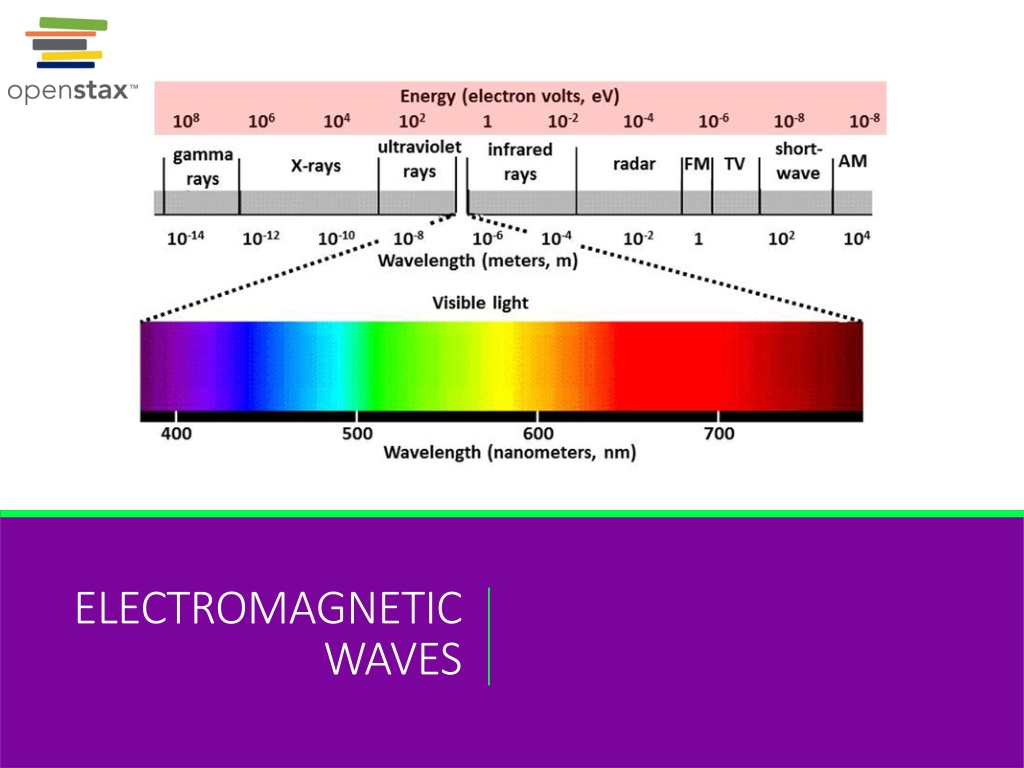













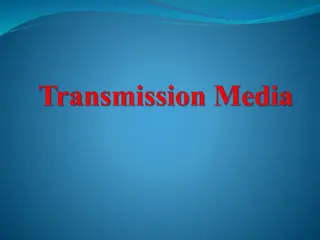

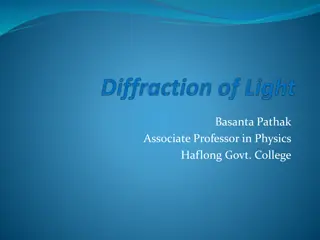







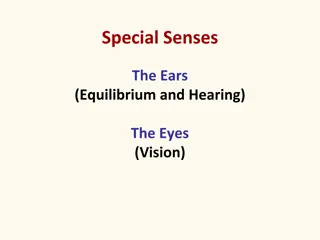

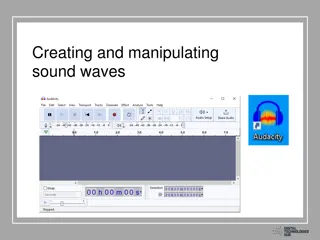









![Property Settlements in Family Law: Case Study of Stamatou & Stamatou [2022] FedCFamC1F 241](/thumb/63303/property-settlements-in-family-law-case-study-of-stamatou-stamatou-2022-fedcfamc1f-241.jpg)






